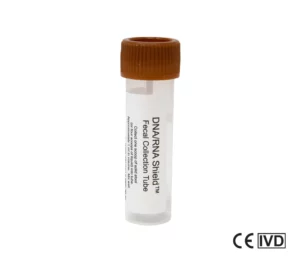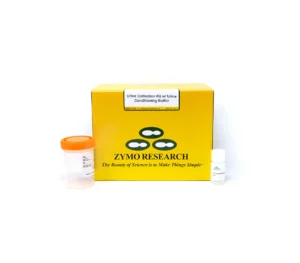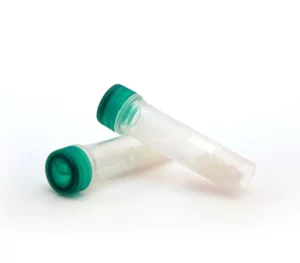DNA/RNA Shield Fecal Collection Tubes – DX are specimen receptacle medical devices for molecular-based in vitro diagnostic applications. These fecal collection tubes take a microbial snapshot of a sample while inactivating viruses making samples safe and ready for transport. Samples stored in the these fecal collection tubes are stable at ambient temperature, and can be frozen for longer-term storage. Simply collect a spoonful of the specimen into the stool collection tubes prefilled with preservative and shake vigorously to ensure proper stabilization.
| Applicable For | Next-Generation Sequencing, qPCR, microarray |
|---|---|
| Device Specs | 20 x 76 mm screw cap tube prefilled with DNA/RNA Shield (9mL). Spoon attached to screwcap. |
| Device Storage | 5-30°C, 24 months |
| Registration Status | CE-IVD certified |
| Sample Collection | 1g or 1mL stool sample |
| Sample Source | Stool, soil, environmental samples |
| Stability | RNA: Ambient temperature (4°C- 25°C) at least 1 month DNA: Ambient temperature (4°C- 25°C) at least 2 years DNA & RNA: Frozen (< -20°C): Indefinitely |
Order information
| Cat # | Name | Size |
|---|---|---|
| R1101-E | DNA/RNA Shield-Fecal Collection Tube – DX | 10 pack |
Sản phẩm liên quan

DNA/RNA Shield Fecal Collection Tube – DX
Overview DNA/RNA Shield Fecal Collection Tubes – DX are specimen receptacle medical devices for molecular-based in vitro diagnostic applications. These fecal collection tubes take a microbial snapshot of a sample while inactivating viruses making samples safe

Urine Collection Kit
Overview Urine Collection Kit w/ Conditioning Buffer (UCB) ensures nucleic acid stability in urine during sample storage/transport at ambient temperatures. Highlights – Effectively preserves DNA and RNA in urine at ambient temperatures– Facilitates pelleting of

DNA/RNA Shiela Lysis and Collection Tubes
Overview DNA/RNA Shield Lysis and Collection tubes are microbial lysis tubes and bead beating tubes designed for the streamlined collection, transport, and processing of biological specimen. The microbial lysis tubes and bead beating tubes are
